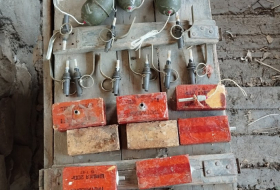Imagine slicing such skyscrapers into 50 or 60 low-rise chunks, then surrounding each chunk with a car park and connecting all the car parks together with roads. You'd have an office park the size of a small town.
The fact that so many people can work together in huge buildings on compact sites is only possible because of the lift.

Programme image for 50 Things That Made the Modern Economy
50 Things That Made the Modern Economy highlights the inventions, ideas and innovations that have helped create the economic world.
It is broadcast on the BBC World Service. You can find more information about the programme's sources and listen online or subscribe to the programme podcast.
Or, perhaps we should say, because of the safety lift. Lifts themselves have existed for a long time.
Archimedes is said to have built one in ancient Greece.
In 1743, at the Palace of Versailles, Louis XV used one for clandestine visits to and from his mistress.
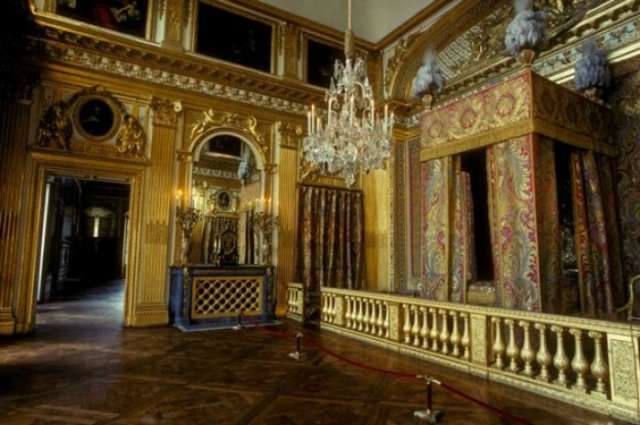
The king's bed chamber in Versailles was linked to that of his mistress via a secret lift
The power for Louis's secret love-lift was supplied by a chap in a chimney breast, standing ready to haul on a rope when required.
Other lifts in Hungary, China and Egypt were powered by animals.
Steam power went further.
Matthew Boulton and James Watt - giants of Britain's industrial revolution - produced steam engines that ran muscular industrial lifts that hauled coal up from the mines.
Safety fears
But while these lifts worked well enough, you wouldn't want to use them to lift people to any serious height, because - inevitably - something would go wrong.
The lift would plunge down the shaft, loose ends of the rope flapping in the darkness, passengers screaming into oblivion.
Most people can walk up five flights of stairs if they must.
Nobody would want to take a lift to such a deadly height.
So what mattered was making a lift that was not only safe, but demonstrably safe.
Both the innovation and the demonstration fell to a man named Elisha Otis.
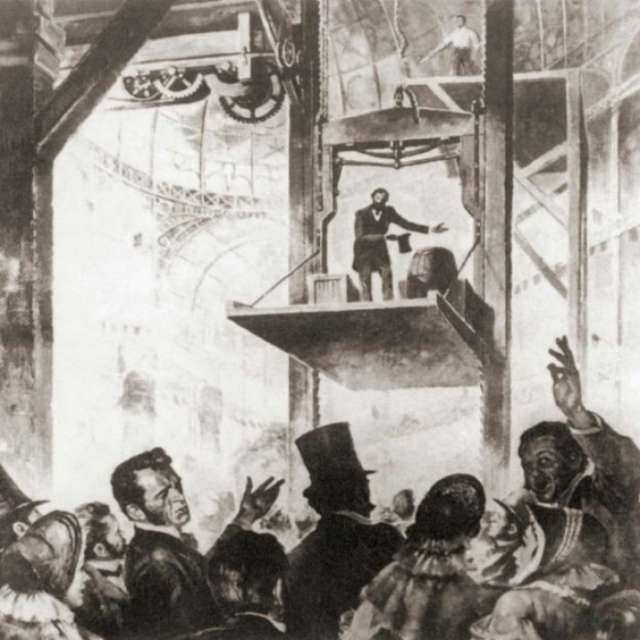
Elisha Graves Otis demonstrating his patent safety lift at the 1854 New York World's Fair
At the 1853 World's Fair in New York, Otis climbed on to a platform, which was hoisted high above a crowd of onlookers nervy with anticipation.
The entire contraption looked a little like an executioner's scaffold.
Behind Otis stood a man with an axe.
He swung down on to the rope, the crowd gasped, Otis' platform shuddered - but did not plunge.
"All safe, gentlemen, all safe," boomed Otis.
The city landscape was about to be turned on its head by the man who had invented not the lift, but the lift brake.
"Turned on its head" is right, because the lift transformed where a building's highest status areas were located.
Density and efficiency
When the furthest reaches of a six- or seven-storey building were accessed only after an arduous climb, they tended to be the servants' quarters or the artist's garret.
After the lift, the attic became the loft apartment, the penthouse.
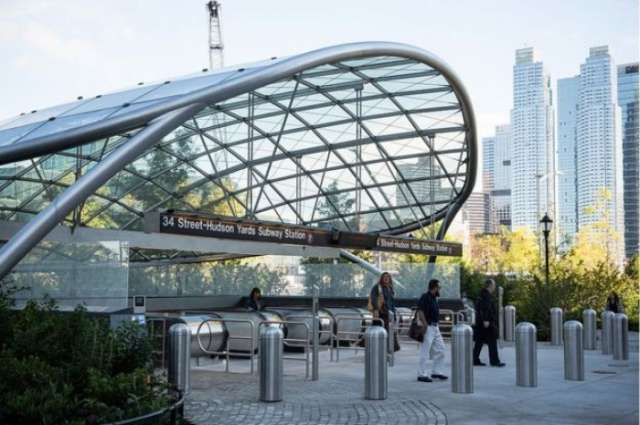
New York's underground system is symbiotically linked to the city's lift-laden skyscrapers
The lift flourished alongside two complementary sets of innovations: the steel and reinforced concrete that made it practical to build tall buildings, and the undergrounds and other mass transit systems that could bring large numbers of people into dense urban cores.
In the quintessential high-rise centre, Manhattan, lifts and the underground are symbiotic.
Without the density that the skyscrapers provide, it would be hard to run an underground system efficiently.
Without the underground system, nobody would be able to get to the skyscrapers.
The result is a surprisingly green urban environment: more than 80% of Manhattanites travel to work on the underground, or by bike or on foot, 10 times the rate for America as a whole.
Minor miracle
A similar story can be told for high-rise cities across the planet, from Singapore to Sydney.
They tend to be highly desirable places to live - as witnessed by people's willingness to pay high rents.
They're creative, as measured by a large output of patents and a high rate of start-ups.
They're rich, as measured by economic output per person.
And relative to rural and suburban areas, they are environmental utopias, with low rates of energy use per person and low consumption of petrol.
This minor miracle - wealth and vitality in a modest environmental footprint - would be impossible without the lift.
Yet the lift seems unfairly underrated.
We hold it to a higher standard than other forms of transport.
We're pleased if we only have to wait a couple of minutes for a bus or a train, but we grumble if we have to wait 20 seconds for a lift.
Many people are nervous of lifts, yet they are safe - at least 10 times safer than escalators.
Innovation and evolution
Frankly, the lift is a faithful servant that is too often ignored.
Perhaps - as Nick Paumgarten once suggested in the New Yorker magazine - this is because using a lift feels almost like being teleported: the doors close, there is a shift in the feeling of gravity, the doors open again and you're somewhere else.
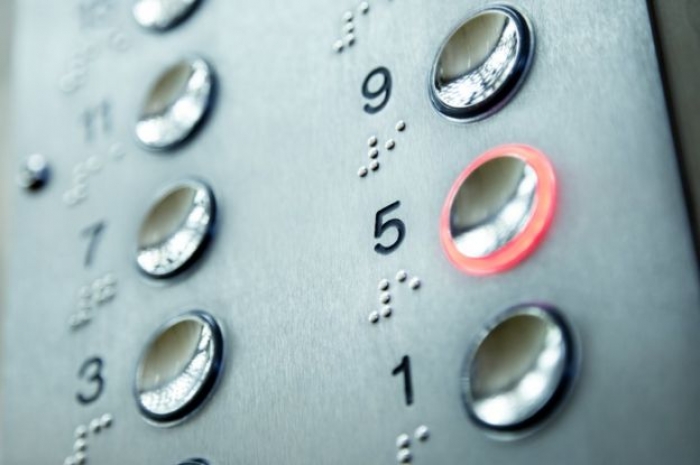
Elevator floor selection keys
There is so little sense of place that without signs and LED displays, we wouldn't have a clue which floor we were emerging into.
While we take the lift for granted, it continues to evolve.
The challenges of ever taller skyscrapers are being met by super-light lift ropes, and by computer controllers that will allow two cars to shuttle up and down a single shaft independently, one above the other.
But often the older, simpler ideas still work: for example, making the wait for a lift pass more quickly by putting full length mirrors in the lobby.
And lifts are naturally energy efficient because their cars have counterweights.
There's always room for improvement, of course.
The Empire State Building - still the most iconic skyscraper in the world - was recently retrofitted in a $500m (£387m) project effort to reduce the building's carbon emissions.

The Empire State Building
The Empire State Building's 68 lifts were recently overhauled by the company founded by Elisha Otis, which installed the original system in 1931
The retrofit included lifts with regenerative brakes, so that when a full car comes down or an empty car heads up, the lift supplies power back to the building.
But the truth is that the Empire State Building was always energy efficient by the simple virtue of being a densely packed vertical structure next to an underground station.
One of the organisations that designed the building's retrofit is visionary environmental organisation the Rocky Mountain Institute, whose super-efficient, environmentally sustainable headquarters is built high in the Rockies, 180 miles (290km) away from the nearest public transit system.
Staff have to drive to work, and even shuttle between buildings a mile or more apart.
Of course, the RMI is a showcase for environmentally efficient design ideas - including high-tech window coatings, krypton-filled triple-glazing, a water-reuse system and energy saving heat exchanges.
But one of the most environmentally friendly technologies is on display in buildings all around us.
It's a green mode of transport that moves billions of people every year - and yet is so overlooked that it can hide in plain sight.
Tim Harford writes the Financial Times's Undercover Economist column. 50 Things That Made the Modern Economy is broadcast on the BBC World Service. You can find more information about the programme's sources and listen online or subscribe to the programme podcast.
More about: #lift

























